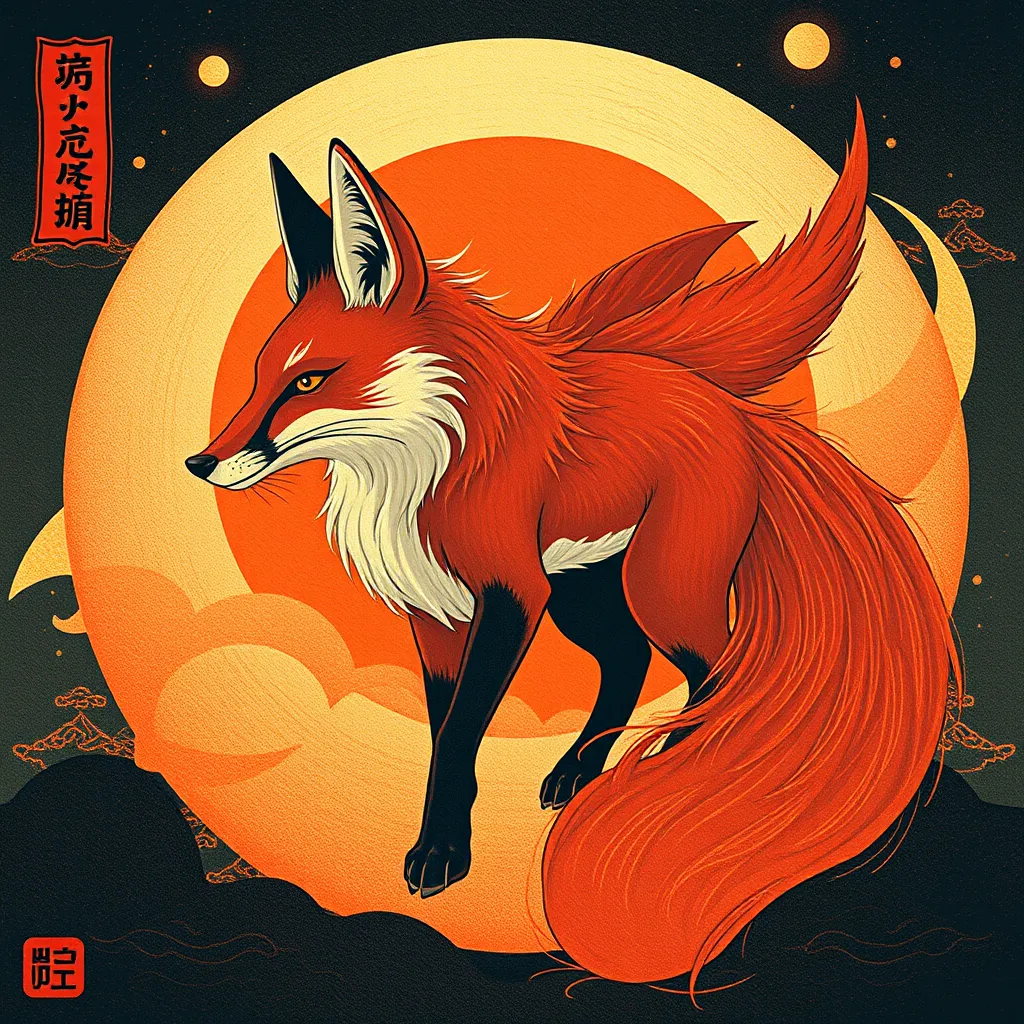Kitsune in Western Culture: Exploring the Fox Spirit’s Influence Beyond Japan
I. Introduction
The Kitsune, a mystical fox spirit rooted in Japanese folklore, is a creature that embodies a rich tapestry of symbolism and cultural significance. Traditionally, it is believed that Kitsune possess intelligence, magical abilities, and the power to shape-shift, often serving as messengers or servants of the deity Inari. The essence of Kitsune transcends mere folklore; it represents the interplay of the natural and supernatural, weaving a narrative that has intrigued people for centuries.
This article aims to explore the influence of the Kitsune in Western culture, examining how this enigmatic figure has been interpreted and adapted beyond its Japanese origins. By analyzing its symbolism, representation in literature, modern media, and its role in contemporary spirituality, we can better understand the Kitsune as a cultural bridge that connects diverse mythologies. The importance of cross-cultural influences in mythology cannot be understated, as these exchanges foster a greater appreciation for shared human experiences.
II. The Symbolism of the Kitsune
The Kitsune is often characterized by a unique set of traits that reflect both its mystical nature and its connection to the human experience. Some of the key characteristics associated with the Kitsune include:
- Intelligence: Kitsune are renowned for their cleverness and strategic thinking.
- Cunning: Often depicted as tricksters, they can outsmart humans and other beings.
- Adaptability: Kitsune can adapt to various situations, symbolizing resilience and resourcefulness.
One of the most intriguing aspects of Kitsune mythology is its dual nature. While many Kitsune are benevolent protectors, aiding humans and bringing good fortune, others possess malevolent traits, causing mischief or harm. This dichotomy emphasizes the complexity of the Kitsune as a symbol, reflecting the multifaceted nature of life itself.
Furthermore, the Kitsune embodies themes of intelligence, cunning, and adaptability, serving as a metaphor for the challenges and triumphs encountered in life. In this way, the Kitsune resonates with individuals facing adversity, inspiring them to embrace their inner strength and resourcefulness.
III. Kitsune in Western Literature
The influence of the Kitsune has extended into Western literature, where the fox spirit has found representation in various fairy tales and folklore. While the concept of a cunning fox is not unique to Japan, the Kitsune’s specific attributes and significance have been adopted and reinterpreted in Western contexts.
Notable literary works featuring fox spirits or similar archetypes include:
- Aesop’s Fables: The clever fox in Aesop’s tales represents cunning and wit, paralleling the Kitsune’s trickster nature.
- Native American Folklore: Various tribes have stories of foxes that display intelligence and cunning, similar to the Kitsune’s role in Japanese mythology.
- Haruki Murakami’s “Kafka on the Shore”: This contemporary novel features supernatural elements, including characters that echo the Kitsune’s transformative abilities.
A comparative analysis of Kitsune and Western fox symbolism reveals both similarities and differences. In Western culture, foxes are often viewed with suspicion, representing deceit or trickery. In contrast, the Kitsune can embody both protective and mischievous qualities, illustrating a broader range of characteristics that reflect the duality of human nature.
IV. Kitsune in Modern Media
In recent years, the Kitsune has made its mark in various forms of modern media, such as films, television shows, and video games. This resurgence has introduced new audiences to the complexities of the Kitsune mythos.
Examples of media that prominently feature Kitsune themes include:
- Anime and Manga: Series like “Naruto” and “InuYasha” showcase Kitsune characters with intricate backstories and powers.
- Video Games: Titles like “Okami” and “The Legend of Zelda: Twilight Princess” incorporate Kitsune-inspired characters and motifs.
- Television Shows: Series such as “Teen Wolf” and “The Vampire Diaries” feature Kitsune as supernatural beings with unique abilities.
The impact of Western adaptations on the perception of Kitsune has been significant. While some portrayals respect the original folklore, others take creative liberties that may not align with traditional narratives. This evolution reflects broader trends in storytelling, where cultural icons are reimagined to fit contemporary themes and values.
V. Cultural Appropriation vs. Cultural Appreciation
As the Kitsune becomes more prevalent in Western culture, the line between cultural appropriation and cultural appreciation becomes increasingly important to navigate. Cultural appropriation involves taking elements from one culture without understanding or respecting their significance, while cultural appreciation involves a genuine interest and respect for the culture being represented.
Examples of respectful integration of Kitsune in Western culture include:
- Collaborative art projects that involve Japanese artists and Western creatives.
- Literary works that accurately represent Kitsune mythology while acknowledging its origins.
- Documentaries and educational programs that explore the cultural significance of Kitsune in Japan.
However, challenges persist in ensuring that cultural exchange is conducted respectfully. It is essential for creators and audiences alike to recognize the origins of the Kitsune and engage with its mythology thoughtfully, avoiding stereotypes and misrepresentations.
VI. The Rise of Kitsune in Contemporary Spirituality
Beyond literature and media, the Kitsune has found a place in modern spiritual practices and beliefs. As interest in spirituality and Paganism has grown in the West, the Kitsune has emerged as a symbol of personal empowerment and transformation.
Kitsune are often viewed as guides or protectors in modern spiritual contexts, embodying qualities such as:
- Wisdom: The Kitsune’s intelligence offers guidance in navigating life’s challenges.
- Transformation: Kitsune symbolize the ability to adapt and change, reflecting personal growth.
- Connection to Nature: As creatures of the wild, Kitsune remind individuals of their bond with the natural world.
This embrace of the Kitsune in contemporary spirituality highlights its role in shaping personal identity and empowerment, allowing individuals to draw strength from its symbolism in their own journeys.
VII. The Future of Kitsune in Global Culture
As globalization continues to shape cultural exchanges, the future of the Kitsune in Western contexts appears promising. Predictions for its continued evolution include:
- Increased collaboration between Western and Japanese artists and storytellers.
- The emergence of new genres that blend traditional Kitsune narratives with contemporary themes.
- Greater awareness and appreciation for the cultural roots of the Kitsune among Western audiences.
Technology and globalization play pivotal roles in facilitating these exchanges, enabling the sharing of stories, art, and ideas across borders. As a result, we can anticipate new interpretations and adaptations of Kitsune mythology that honor its origins while resonating with modern audiences.
VIII. Conclusion
In summary, the exploration of the Kitsune in Western culture reveals a rich tapestry of cross-cultural influences that reflect the complexities of mythology. From its symbolism to its representation in literature and modern media, the Kitsune stands as a testament to the power of storytelling and cultural exchange.
As we appreciate the significance of the Kitsune as a cultural bridge, it is essential to approach diverse mythologies with respect and understanding. By fostering this appreciation, we can enrich our globalized world and celebrate the myriad ways in which cultures inspire and connect us.




